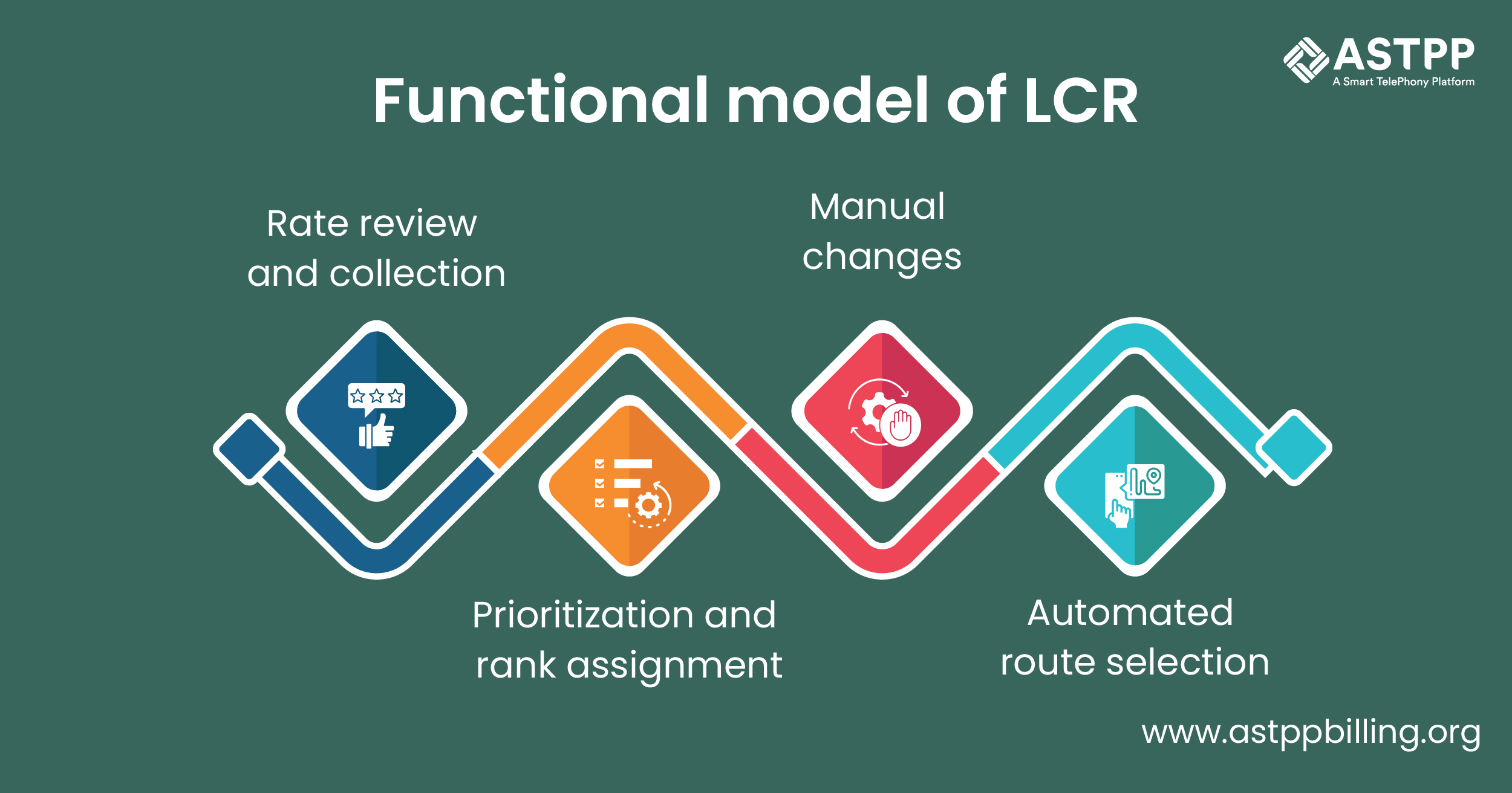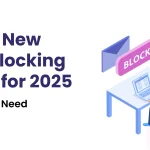Business communication needs are rapidly increasing. Therefore, enterprises and businesses seek efficient yet cheap communication tools. Certainly, this quest is justifiable as it helps in keeping up with the needs and demands of business collaboration. Moreover, it keeps the budget under control. We are lucky to have VoIP telephony solutions like class 4 Softswitch, class 5 Softswitch, IP PBX solution, etc. These solutions enable businesses to achieve greater efficiency and accuracy without incurring substantial costs or effort.
Undoubtedly, there are several powerful features available in these VoIP based communication solutions. Certainly, Least Cost Routing (LCR) stands out as an intelligent feature that clearly meets the fundamental needs of businesses. Clearly, it provides cheap calling services for long distance calls. Moreover, it helps in enjoying high quality service and calls.
Let’s delve deeper into the details of LCR to understand this phenomenon in depth. This blog post will cover definite information about least cost routing to give you a complete guide that will help you understand this topic completely.
1. Understanding LCR
Simply put, least cost routing is a call routing strategy that uses the cheapest call route or CC route to ensure the least cost for a call. Generally, LCR is used for long distance calling to reduce communication expenses. Fundamentally, it reduces the total cost of making international calls by selecting the cheapest route for each call. Generally, it is used in a class 4 Softswitch solution to provide wholesale VoIP services at cheaper rates because this solution is used to route calls to international destinations.
Unlock the savings with Least Cost Routing!Discover how it can benefit your business.
In the context of VoIP solutions, LCR involves dynamically choosing the path that offers the lowest cost. It may sound straightforward, but it is not. In fact, it considers several factors for the selection of the right and least cost route. For example, call rates, Quality of Service (QoS), and the rates charged by various carriers are calculated in real time and considered to choose a route to offer LCR service.
Modernization has transformed this process with powerful algorithms to make all these analyses and calculations in real time. Moreover, it is a completely automated process that checks and chooses call rates from different carriers or routes in real time. By dynamically selecting the least expensive route, businesses can achieve significant cost savings in their telecommunication expenses, especially, long distance calls.
According to major businesses that have an overseas business and use VoIP based solutions, LCR is one of the most crucial features. Therefore, along with the wholesale Softswitch, this solution is also going to be part of several other communication tools developed using the best VoIP technologies and frameworks.
2. Working Model of LCR

Let’s understand the working methodology of Least Cost Routing in the modern era with the class 4 Softswitch. Please note that LCR is a feature to choose the least cost routes for calling and it can be part of any VoIP solution. Moreover, development companies can also develop a custom solution that provides only the least cost routing facility. In short, the working model of LCR that we are going to cover in this section is applicable to any VoIP software that provides the least cost routing service.
Step 1: Rate review and collection
The LCR algorithm will collect data on call rates from different telecom providers or routes. Besides call rates, this algorithm will also gather other information such as quality of call, quality of service, network addresses, delay, and more.
Step 2: Prioritization and rank assignment
Depending on the data collected during the data collection process, LCR will create a comparison chart or report. This chart will include information on phone numbers, network addresses, cost per call, etc. Moreover, this chart will give ranks to different entries depending on the algorithm to set priorities. For example, if the algorithm gives 100% emphasis on the cheapest rate, then the route with the least cost will get Rank # 1. Likewise, if the algorithm focuses 80% on the cheapest rate, 10% on the quality of a call, and 10% on the remaining factors, then accordingly the LCR algorithm will choose the best route. Here, the route with a little higher cost than the cheapest one can also get the 1st rank and priority.
We recommend you read our blog post describing the most popular call routing strategies available in the wholesale switch.
Step 3: Manual changes
Steps 1 and 2 are completely automatic. However, wholesale VoIP service providers using this tool to offer call routing services might want to make changes in the rank assignment depending on the profit model. Therefore, several solutions, including class 4 and class 5 Softswitch provide options to make manual edits in ranking and priority. Moreover, these tools also provide automated adjustments depending on the real time events. For example, a VoIP service provider can make a rule that if a certain route is the priority and selected for maximum time during peak hours, then its cost will be increased by 10% automatically. In short, a developer can provide the required features to make manual changes to ensure high profitability to a service provider.
Step 4: Automated route selection
Once all rules are set and the least cost routing algorithm is configured, the system will use it to select the cheap routes for long distance calling. Certainly, this will happen automatically and real time to ensure excellent customer experience with cheaper rates and higher efficiency. Moreover, it will also boost benefits for the provider.
3. Revolutionary Transformation of the LCR Model

Unquestionably, long distance calling has been in existence for decades. Therefore, the mechanism to make cheap calls has also been in existence for decades. Over time, the mechanism of Least Cost Routing (LCR) has gone through revolutionary transformations. Certainly, it is difficult to cover all transformational stages in this blog post. However, we can definitely go through the major ones to see how LCR has gone through different transitions.
A manual system with a public switched network
Traditionally, long distance calls were made using the PSTN system, which used to use hardware based infrastructure and copper wires to connect overseas calls. Moreover, the traditional system had a telephone operator that used to take calls, ask the destination, and then connect the caller to the destined recipient. The method of route selection was completely manual. Therefore, this method was possibly error prone as the telephone operator might not have been fast and accurate in finding the cheapest route. Moreover, PSTN is an expensive telecommunication solution.
A manual system with a software based VoIP solution
With the invention of VoIP, one of the few functionalities invented by innovators was the least cost routing. Undoubtedly, innovative minds had this knowledge that people have to make long distance calls. Therefore, they are interested in LCR techniques.
Originally, the VoIP system was used to identify the routes and let telecom operators select the cheapest routes. Again, this process was somewhat slow and inaccurate as it was influenced by human telecom operators who can make mistakes.
Completely automated VoIP system
With the increasing demand for automated and accurate solutions, the digital VoIP base least cost routing functionality was invented. This system is used to choose the least cost route automatically. However, it used to not consider other criteria. Fundamentally, it collects route rate information and selects the route that is the cheapest of all. Besides call rates, it did not consider any other criteria or parameters for route selection.
Advanced LCR systems
The modern LCR systems are completely automated yet quality controlled solutions. Unlike traditional LCR solutions, it creates priority charts with ranking by measuring all different parameters. Moreover, it suggests the least cost route that is selected based on multiple criteria such as cost, quality, profit margin, and more. Definitely, this solution allows providers to take advantage of competitive pricing offered by various carriers. Moreover, it helps them ensure that the chosen route aligns with the specific cost parameters and quality requirements set by the organization or customer. This practice contributes to more efficient and cost-effective voice communications within the organization. Moreover, it makes the right use of LCR technology.
Future trends incorporating smart algorithms
Even if LCR functionality is now mature and widely used in different VoIP solutions. This functionality is still getting several innovations. Undoubtedly, AI is also making its way into building smarter LCR functionality. This solution will help in making smart decisions in selecting the right routes that create a win-win situation for providers, carriers, and customers.
4. Top Benefits of Adopting LCR for Your Business

As discussed earlier, Least Cost Routing has been one of the most popular functionalities for a long time. In fact, for decades it has been an integral part of a class 4 Softswitch solution. Unquestionably, this VoIP solution has multiple other call routing rules, too. However, LCR is still on the topmost priority list due to its heavy demand.
There are several advantages of using this software for your business. Let’s discuss the top three of them.
Cost efficiency and high quality
Undoubtedly, one of the biggest and most remarkable advantages of using LCR is cost benefits. It has the potential to reduce the communication cost of a business by up to 75% or more. The lowest cost routing is VoIP functionality. It means you save on infrastructure because VoIP is software based and digitized solution. In fact, you don’t even need IP phones to make calls. You can make calls through any Softphone, be it a PC dialer, a mobile based Softphone, or even a WebRTC based web phone. In short, you directly save on the installation, management, and maintenance of telephony infrastructure and services. Moreover, VoIP based calling will help you choose the best rates that are cheapest of all and yet provide you with a good quality of call and service. What else do you need from a communication tool then?
High availability
Often, businesses emphasize more on service availability rather than just cost benefits. Thanks to the VoIP solution, this is possible to achieve. Unlike traditional times, when you could make the least costly international calls only during nighttime, nowadays, you can make international calls whenever you need. Certainly, the cost might vary, but the difference will be negligible because the least cost routing functionality in wholesale Softswitch will ensure the selection of the cheapest route. Moreover, if the cheapest route or carrier is unavailable for any reason, the system will automatically select the next route. In short, your long distance calling system with the LCR feature will be available for you around the clock.
Excellent scalability
Business communication needs are dynamic. Conversely, the requirement for a number of concurrent international calls can vary depending on several factors. Moreover, the total duration of long distance calls may also vary in real time. Therefore, businesses focus on using scalable and elastic solutions that can provide reliable scalability. Thanks to modernized least cost routing solutions and cloud native technology, we have highly scalable systems at our disposal. Customers using cheap long distance calling services can change their calling requirements at any time and they will get scaled up instantly by the provider without any delays or long processes. This is unlike traditional telephony systems, which need you to get phone line installation prior to making more calls from different extensions.
Concluding Notes
In conclusion, Least Cost Routing is a revolutionary functionality that has been dominating the VoIP communication industry for decades. Certainly, there are many more revolutionary changes that are going to take place in this segment to make this feature bigger, better, and smarter. Moreover, due to its amazing benefits, it is part of many VoIP based software solutions rather than just one or two that were used conventionally. In short, LCR is here to bring substantial changes in your boring business communication without making holes in your pocket.
We are one of the leading providers of the best VoIP communication solutions. Least cost routing is one of the smart features implemented in our class 4 Softswitch. To know more about our expertise in this area, contact us.





